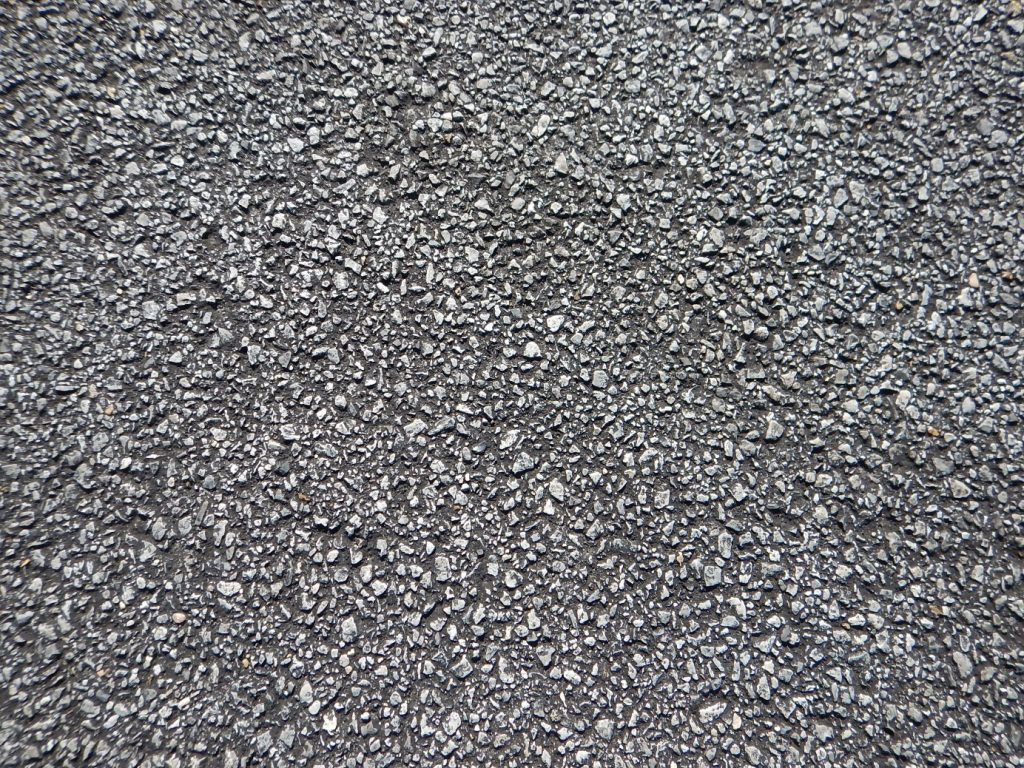
We are often asked, “When is the best time to seal coat a new asphalt concrete pavement?” Our thinking has evolved from four to five years to one or two years after paving. The reasoning is the early seal coat application seals the surface porosity before too much oxidation has occurred and the dark pavement appearance is maintained. If it is possible from a capital budget accounting perspective, a seal coat should be a part of the paving project.
We recently updated a Zimmer pavement management report at a mall which had a seal coat project three years prior. The top photograph presents the three-year-old seal on pavements, at the time of the sealing, were two years old (left side) and six years old (right side). The early seal coating is maintaining a darker surface on the newer pavement. The older pavement still has a nice color.
More important than appearance is the sealant material penetrated and filled the asphalt concrete porosity. The photograph below shows a close-up of the right side of the top photograph. The sealed surface has the sealant worn off the aggregate, but the sealant still surrounds the aggregate. The sealant will hold in the smaller aggregate and fill pavement pores.

The effects of sunlight and moisture combining to oxidize the asphalt cement in the pavement layer is slowed by the thin layer of sealant. Seal coating is sometimes disparaged as just putting paint on the pavement. But just as paint will protect house siding, an asphalt-based sealant will protect an asphalt concrete surface.
Zimmer Consultants photograph